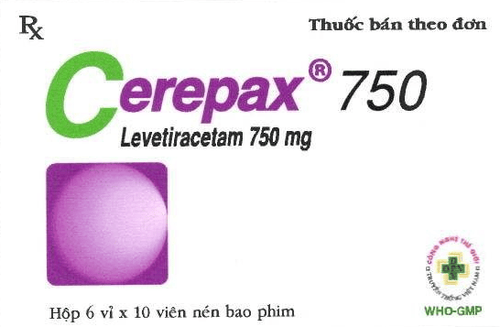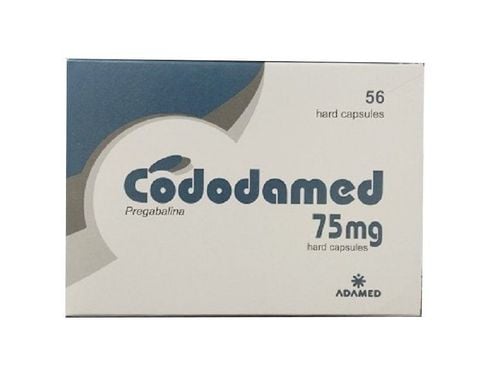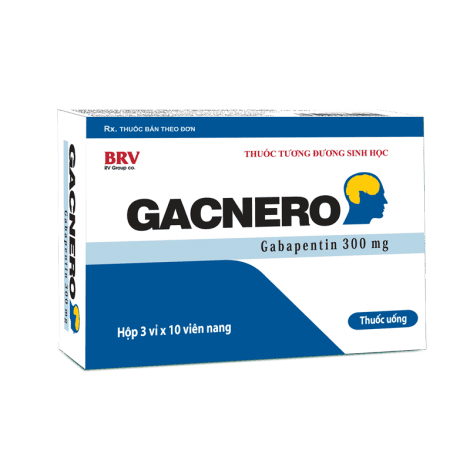This is an automatically translated article.
Malomibe belongs to the group of psychotropic drugs, indicated for the treatment of epilepsy. Let's find out what Malomibe is used for in a few articles below.
1. What is Malomibe?
Malomibe medicine contains Levetiracetam 250mg and other excipients just enough provided by the manufacturer. The drug is prepared in the form of tablets, the box includes 3 blisters, 5 blisters, 10 blisters, each blister has 10 tablets.
2. What are the uses of Malomibe?
Malomibe is indicated for the treatment of the following cases:
Single-dose treatment of epilepsy in adults and adolescents over 16 years of age. Treatment of primary (primary) partial seizures with or without secondary generalization. Often used in combination with other antiepileptic drugs to increase the effectiveness of treatment. Primary partial seizures with or without secondary generalization in adults, adolescents, children, and infants from 1 month of age. Myoclonic seizures in adults and adolescents over 12 years of age with juvenile myoclonic epilepsy. Spastic, primary generalized seizures in adults and adolescents over 12 years of age with idiopathic generalized epilepsy. Malomibe is contraindicated in the following cases:
Allergy to the active ingredient Levetiracetam and other excipients contained in the composition of the drug.
3. Dosage and how to take Malomibe
How to use:
Malomibe is prepared in the form of tablets, used orally. The drug should be taken with water. The medicine can be taken with or without meals. The drug should not be taken with alcohol to limit unwanted effects. Here are the recommended dosages of Malomibe:
Take the dose prescribed by your doctor. The drug is used twice a day, should be taken in the morning and evening, at the same time each day. Duration of treatment:
Drugs are usually treated for a long time. The doctor will decide the length of time to take the medicine according to the medical condition of each patient. Patients should not stop taking the drug on their own. Dose reduction is appropriate under the guidance of the treating physician. Note: The above dosage is for reference only. The treating doctor will base on the condition of each patient to prescribe the appropriate dose.
4. Malomibe side effects
Doctors always consider between the benefits that Malomibe brings to the patient and the possible risk of side effects to prescribe the appropriate medication.
Malomibe is generally well tolerated, and side effects are usually mild and transient, which usually resolve on discontinuation of treatment. Some common side effects below:
Common:
Sore throat, somnolence, headache, fatigue, dizziness. Anorexia, agitation, insomnia, nervousness, skin rash, abdominal pain, diarrhea, indigestion, vomiting, loss of balance. Uncommon:
Thrombocytopenia, increase/decrease in body weight, neurological disorders, hallucinations, cough, diplopia, blurred vision. Asthenia, fatigue, hair loss, eczema, itching Rare:
Infection, leukopenia, hyponatremia, suicide, personality disorder, thinking disorder, hyperactivity, pancreatitis. In the event that the patient taking the medicine develops any suspected Malomibe-related effects, let the treating physician know for full advice.
5. Malomibe drug interactions
Patients need to list the drugs such as prescription and non-prescription drugs, functional foods, herbs, etc. being used for specific advice by the doctor.
Some drug interactions when combined with Malomibe are as follows:
Malomibe does not occur interaction reactions when used in combination with other antiepileptic drugs, Probenecid drugs, oral contraceptives, Antacid drugs. There is a risk of reducing the therapeutic effect of Malomibe when used in combination with the osmotic laxative Macrogol. Therefore, these drugs should not be used 1 hour before or 1 hour after taking Malomibe.
6. Precautions when taking Malomibe
Some notes when patients take Malomibe drugs are as follows:
Patients should not stop taking the drug suddenly due to the risk of increasing the frequency of seizures. For patients with renal impairment, appropriate dose adjustment is required because of the increased risk of toxicity. In patients with severe cirrhosis, renal function should be assessed prior to initiating therapy. Some patients have suicidal thoughts and actions while taking the drug. Therefore, the treating physician should weigh the patient's risk of suicide against the benefit of taking Malomibe. The drug has the potential to aggravate existing psychiatric disorders. In such cases, the dose should be reduced or discontinued and the patient monitored closely. Serious skin reactions may occur in patients receiving Malomibe, such as Stevens-Johnson syndrome, toxic epidermal necrolysis. The patient should immediately stop taking the drug and start another treatment. Pregnant women: Do not use this medicine, especially in the first 3 months of pregnancy, unless absolutely necessary and specifically prescribed by the treating doctor. Lactation: Malomibe is excreted in human milk, therefore, to limit potential risks to the nursing infant, it should not be used unless specifically intended. Based on the necessity of using the drug on the mother to decide between stopping breastfeeding or stopping using the drug.
7. What to do in case of missed dose or overdose of Malomibe?
When forgetting a dose, the patient should take it as soon as he remembers, the medicine can also be taken 1-2 hours apart from the usual time of taking the medicine. However, the patient should skip the missed dose if it is almost time for the next dose and should not take a double dose to make up for the missed dose. When Malomibe overdose, patients often experience symptoms such as drowsiness, agitation, aggression, impaired consciousness, respiratory depression, depression, coma. The patient should immediately stop the drug and notify the doctor. Take the patient to the nearest hospital when the condition worsens. In severe cases, induce vomiting or gastric lavage. Above is information about uses, dosage and precautions when using Malomibe medicine. This is a prescription drug, so patients do not arbitrarily use it to ensure safety for health. The consultation with the doctor will help the patient to use the drug Malomibe effectively.













